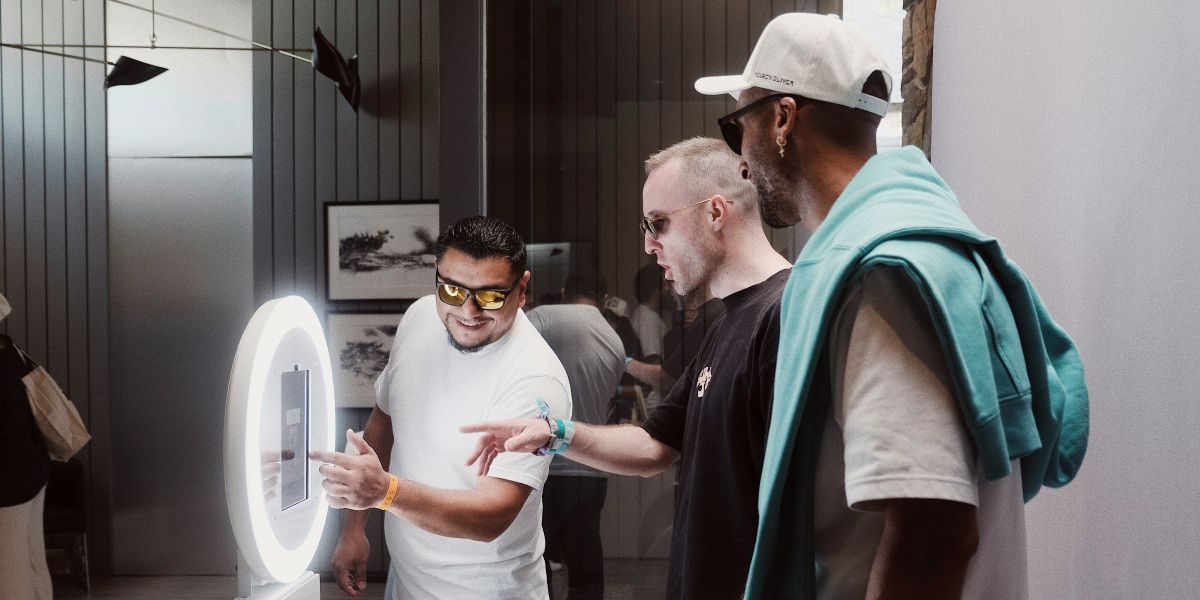Artificial intelligence has rapidly become a transformative force in modern marketing. From predictive algorithms to real-time engagement analytics, AI is helping brands connect with their audiences in ways that are both measurable and meaningful. Within the world of event marketing, AI has shifted from being a novelty to a necessity, particularly in spaces where creativity meets technology.
Photo and video booth software now stands at the crossroads of this transformation. What once served as a fun way to capture moments has evolved into a powerful data-gathering tool that helps marketers understand audience behavior, sentiment, and demographics.
Today’s AI-driven booth experiences allow event organizers to go beyond surface-level engagement. They can observe patterns, analyze interactions, and personalize experiences that leave lasting impressions, all while collecting valuable insights that inform future campaigns.
Understanding Today’s Photo and Video Booth Landscape
A decade ago, photo booths were largely about entertainment. They added excitement to weddings, trade shows, and corporate events by giving attendees a fun memento to take home. But as technology evolved, so did their purpose.
Modern booths, particularly those powered by advanced video booth software, are now connected to the cloud, equipped with analytics dashboards, and built to gather real-time user data. Each capture, click, and share contributes to a growing pool of insights that reveal how audiences engage with a brand or event.
Instead of being simple visual experiences, today’s booths double as marketing intelligence hubs. They record patterns like repeat engagement, group participation, and even emotional expression, all of which give brands a deeper understanding of their audience.
For marketers and event planners, this means that every smile or pose becomes a piece of measurable data, turning fleeting moments into actionable insights.
How AI Transforms Audience Insights
AI’s significant contribution to the photo and video booth industry lies in its ability to interpret human behavior through visual data. Using facial and sentiment recognition technologies, AI can detect expressions, estimate age ranges, and even gauge engagement levels.
Machine learning further enhances this understanding by identifying trends in how users interact with booth features. For instance, AI can determine which filters, backdrops, or visual effects are used frequently, revealing what resonates with different demographics.
Predictive analytics takes it a step further. By examining usage and engagement data, AI may identify patterns such as the time of day booths are active or which video formats generate shares on social media.
These insights don’t just describe audience behavior; they inform future strategy. Event organizers can adjust layouts, redesign user flows, or tailor effects to match audience preferences, turning data into a practical guide for more effective marketing.
From Data to Decisions: Turning Captures into Audience Intelligence
Every AI-powered booth session produces multiple layers of data, and each tells part of the audience’s story.
- Demographics – reveal who is attending: age groups, gender distribution, and total participation counts.
- Sentiment indicator – measure emotional tone through smiles, group size, or time spent engaging with the booth.
- User behavior metrics – track how often people return, which content formats they prefer, and how they interact with prompts.
- Engagement analytics – provide insights into how content performs after the event: social shares, downloads, and reposts.
When these metrics are analyzed together, they paint a full picture of how an audience responds to an activation. This helps marketers tailor future campaigns, refine booth setups, and create more impactful content.
One of the key points is that AI turns engagement data into measurable ROI. Instead of relying on guesses or post-event surveys, companies can quantify success through concrete data: participation rates, share counts, and audience reach.
The Role of Video Booth Software in AI-Driven Marketing
Video booth software plays a unique role in this new landscape. Unlike still photo captures, video content provides a dynamic view of audience emotion and movement, offering deeper storytelling opportunities.
AI can analyze motion data to detect energy levels, excitement, or crowd density, factors that static images cannot convey. This makes video booths a valuable source of qualitative insight, helping brands understand not just who participated, but how they felt during the experience.
Modern AI-powered software also enhances creative possibilities. Features like segmentation and background replacement allow brands to create immersive, customizable environments without green screens. This technology can instantly remove and replace backgrounds, letting attendees appear in branded virtual settings.
Integrated analytics dashboards further strengthen the impact. Marketers can track which video features generate engagement or which visual effects encourage repeat participation, bridging the gap between creativity and measurable performance.
The Business Advantage: Smarter Audience Engagement
AI-powered photo and video booth systems provide significant advantages to both marketers and operators.
Real-time analytics offer instant feedback on who is interacting, how long they engage, and what captures their attention. This data can justify event ROI with clarity and precision.
For booth owners, automation features like facial recognition and auto-sharing streamline workflows, allowing smoother user experiences. For marketers, integrating booth analytics into CRM systems or marketing dashboards closes the loop between activation and performance.
By connecting booth insights to broader marketing platforms, brands can refine future campaigns, target specific audience segments, and assess which experiences lead to favorable outcomes.
Common Practices for Photo Booth Businesses and Event Organizers
To fully benefit from AI-driven booth analytics, preparation and clarity are key.
1. Define goals early – Establish clear KPIs before the event, such as engagement rates, demographic diversity, or social reach, to measure success effectively.
2. Optimize the setup – Ensure proper lighting, clear signage, and intuitive interfaces to encourage participation and accurate data collection.
3. Incentivize engagement – Offer creative rewards for sharing or interaction, while maintaining transparency about data use.
4. Use post-event analytics – Review AVA or dashboard reports to evaluate booth performance and identify improvement areas for future activations.
These practices help ensure that technology enhances, rather than complicates, the attendee experience.
Looking Ahead: The Future of AI in Experiential Marketing
The next frontier for video booth software lies in real-time personalization. Future systems may adjust filters, effects, or prompts based on live audience behavior. Emotion tracking and predictive engagement models could soon allow AI to anticipate what guests will enjoy next.
As these capabilities evolve, AI will not replace creativity; it will empower it. Event professionals will still craft the themes and experiences, while AI provides the insights that make those experiences more targeted and impactful.
Conclusion: Turning Moments into Meaning
Understanding audiences through AI-powered photo and video booth software allows marketers to make smarter, data-informed decisions. Each interaction becomes an opportunity to learn, refine, and create deeper connections.
For booth owners, event planners, and marketers, AI should not be seen merely as automation. It is a bridge between technology, creativity, and genuine audience insight, transforming every captured moment into a story that reveals what truly resonates.

















